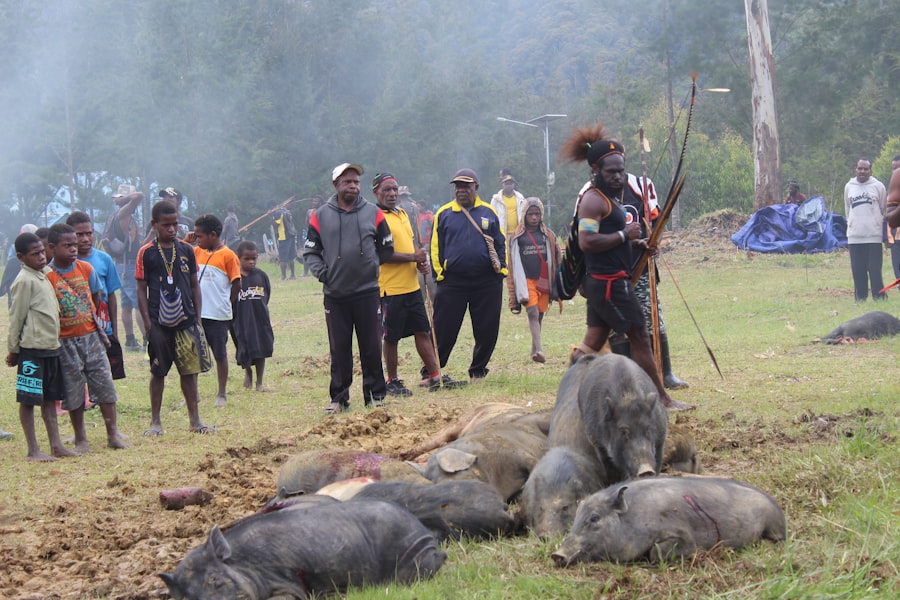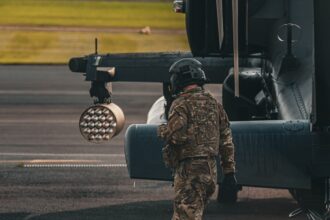The concept of unlawful combatants emerged prominently during World War II, a conflict that redefined the nature of warfare and the rules governing it. As nations grappled with the unprecedented scale of violence and the complexities of modern combat, the distinction between lawful and unlawful combatants became increasingly blurred. Unlawful combatants, often characterized by their failure to adhere to the established norms of warfare, posed significant challenges to military and legal frameworks.
This article delves into the multifaceted nature of unlawful combatants during WWII, exploring their definitions, treatment, and the lasting implications for international law. World War II was marked by a myriad of unconventional warfare tactics, including guerrilla warfare, espionage, and the involvement of non-state actors. These elements contributed to the emergence of individuals and groups who operated outside the traditional parameters of combatant status.
The actions and treatment of these unlawful combatants not only influenced the course of the war but also set a precedent for future conflicts, raising critical questions about legality, morality, and the evolving nature of warfare.
Key Takeaways
- Unlawful combatants in WWII were individuals who did not meet the criteria for lawful combatants under the Geneva Conventions.
- Allied forces used various methods to identify and detain unlawful combatants, including interrogation and screening processes.
- Unlawful combatants were often subjected to controversial treatment, including internment in prisoner of war camps and military tribunals.
- The legal and ethical controversies surrounding unlawful combatants in WWII raised questions about the application of international law and human rights.
- The legacy of unlawful combatants in WWII continues to impact modern warfare and the treatment of non-state actors in armed conflicts.
Definition and Identification of Unlawful Combatants
Unlawful combatants are typically defined as individuals who engage in hostilities without being entitled to the protections afforded to lawful combatants under international humanitarian law. This category includes those who do not belong to a recognized state military, do not wear distinctive insignia, or fail to conduct operations in accordance with the laws of war. The identification of unlawful combatants during WWII was often fraught with ambiguity, as many individuals operated in clandestine capacities or were part of resistance movements that lacked formal recognition.
The challenge of identifying unlawful combatants was compounded by the chaotic nature of WWII. Resistance fighters, partisans, and other irregular forces frequently engaged in combat against occupying powers without adhering to conventional military protocols. This lack of formal structure made it difficult for military authorities to classify these individuals accurately.
As a result, many were subjected to harsh treatment, often being labeled as criminals rather than soldiers, which further complicated their status under international law.
Treatment of Unlawful Combatants by Allied Forces

The treatment of unlawful combatants by Allied forces during WWII varied significantly depending on the context and location. In some instances, Allied forces adhered to principles of humane treatment, recognizing the complexities surrounding irregular fighters. However, there were also numerous instances where unlawful combatants faced severe reprisals, including execution or imprisonment without trial.
The inconsistency in treatment reflected broader tensions within the Allied coalition and differing interpretations of legal norms. For example, in occupied territories, Allied forces often found themselves in a moral quandary when dealing with local resistance fighters. While some commanders advocated for leniency and recognition of their contributions to the war effort, others viewed them as threats to stability and order.
This divergence in approach led to a patchwork of policies regarding the treatment of unlawful combatants, highlighting the challenges faced by military leaders in navigating the legal and ethical landscape of wartime conduct.
Legal and Ethical Controversies Surrounding Unlawful Combatants
| Controversy | Metrics |
|---|---|
| Legal Status | Number of unlawful combatants detained |
| Human Rights Violations | Number of reported abuses |
| International Law | Number of treaties and conventions violated |
| Public Opinion | Percentage of population in support/opposition |
The status and treatment of unlawful combatants during WWII sparked significant legal and ethical controversies that continue to resonate today. Critics argued that the designation of individuals as unlawful combatants often served as a pretext for violating their rights and subjecting them to inhumane treatment. The lack of clear legal definitions and guidelines contributed to a culture of impunity, where military authorities could act without fear of accountability.
Moreover, ethical dilemmas arose when considering the motivations and actions of unlawful combatants.
The question of whether these individuals should be treated as criminals or as legitimate fighters for their cause remains a contentious issue in discussions about wartime ethics and justice.
Impact of Unlawful Combatants on International Law
The experiences and challenges posed by unlawful combatants during WWII had a profound impact on the development of international law.
In response to these challenges, subsequent international treaties sought to address the complexities introduced by irregular warfare.
One notable outcome was the establishment of the Geneva Conventions, which aimed to provide comprehensive protections for individuals involved in armed conflict, including those who might not fit neatly into traditional categories. The conventions sought to ensure that all individuals, regardless of their status as lawful or unlawful combatants, were afforded certain rights and protections under international law. This evolution marked a significant shift towards recognizing the complexities of modern warfare and the need for legal frameworks that could adapt to changing realities.
Examples of Unlawful Combatants in WWII

Throughout World War II, numerous examples illustrate the complexities surrounding unlawful combatants. One prominent case involved members of resistance movements across Europe who engaged in sabotage and guerrilla tactics against occupying forces. These individuals often operated outside formal military structures, making it difficult for authorities to classify them as lawful combatants under existing legal frameworks.
In addition to resistance fighters, other groups such as partisans in Eastern Europe exemplified the challenges posed by unlawful combatants. These fighters frequently engaged in brutal confrontations with occupying armies while also facing reprisals from both Axis powers and their own governments. The actions taken against these groups often reflected broader geopolitical considerations rather than strict adherence to legal norms, further complicating their status as combatants.
The Nuremberg Trials and Unlawful Combatants
The Nuremberg Trials represented a pivotal moment in addressing wartime conduct and accountability for unlawful combatants during WWII. These trials sought to hold individuals accountable for war crimes committed during the conflict, including actions taken against unlawful combatants. The proceedings underscored the importance of establishing legal precedents regarding the treatment of individuals engaged in hostilities outside recognized military structures.
During the trials, issues surrounding unlawful combatants were brought to the forefront as defendants argued about their actions within the context of wartime necessity. The Nuremberg Trials ultimately contributed to a broader understanding of accountability in warfare, emphasizing that individuals could be held responsible for their actions regardless of their status as lawful or unlawful combatants. This legacy continues to influence contemporary discussions about justice and accountability in armed conflict.
Legacy of Unlawful Combatants in Post-WWII Conflicts
The legacy of unlawful combatants from WWII has reverberated through subsequent conflicts, shaping how nations approach irregular warfare and non-state actors. The lessons learned from dealing with unlawful combatants during this period have informed military strategies and legal frameworks in later conflicts, including those in Vietnam, Iraq, and Afghanistan. As warfare has evolved, so too have the challenges associated with identifying and addressing unlawful combatants.
In post-WWII conflicts, nations have grappled with similar dilemmas regarding how to classify and treat individuals engaged in hostilities outside traditional military structures. The rise of terrorism and asymmetric warfare has further complicated these issues, leading to ongoing debates about legality, ethics, and human rights in contemporary armed conflicts. The legacy of WWII continues to shape discussions about how best to navigate these complex challenges while upholding principles of justice and accountability.
Public Perception and Media Portrayal of Unlawful Combatants
Public perception and media portrayal of unlawful combatants have played a significant role in shaping societal attitudes towards these individuals throughout history. During WWII, media coverage often framed resistance fighters as heroes battling against tyranny; however, this narrative was not universally accepted. In some cases, media outlets depicted these individuals as criminals or terrorists, reflecting broader societal divisions regarding their legitimacy as combatants.
In contemporary contexts, media portrayals continue to influence public perception of unlawful combatants. Coverage often emphasizes narratives that align with national interests or political agendas, complicating efforts to foster a nuanced understanding of these individuals’ motivations and actions. As societies grapple with issues related to terrorism and asymmetric warfare today, media representations remain critical in shaping public discourse around unlawful combatants.
Repercussions of Unlawful Combatants in Modern Warfare
The repercussions of unlawful combatants extend into modern warfare, where nations face ongoing challenges related to irregular fighters and non-state actors. The lessons learned from WWII have informed contemporary military strategies but have also led to new dilemmas regarding legality and ethics in armed conflict. As nations confront threats posed by groups operating outside traditional military structures, questions about accountability and justice remain at the forefront.
Moreover, the rise of technology has transformed how nations engage with unlawful combatants today. Drones, cyber warfare, and other advanced technologies have created new avenues for conflict while complicating existing legal frameworks governing armed engagement. As nations navigate these complexities, they must grapple with the legacy of WWII’s unlawful combatants while striving to uphold principles of justice and human rights.
Revisiting the Legacy of Unlawful Combatants in WWII
The legacy of unlawful combatants during World War II remains a critical area for reflection as societies continue to confront complex challenges related to warfare today. The experiences from this period have shaped international law and influenced how nations approach irregular fighters in contemporary conflicts. As discussions about legality, ethics, and accountability persist, it is essential to revisit the lessons learned from WWII’s unlawful combatants.
Ultimately, understanding the complexities surrounding unlawful combatants requires a nuanced approach that considers historical context alongside contemporary realities. By examining these issues through a critical lens, societies can better navigate the challenges posed by modern warfare while striving to uphold principles of justice and human rights for all individuals involved in armed conflict.
During World War II, the concept of unlawful combatants emerged as a significant issue, particularly in the context of the treatment of individuals who did not fit the traditional definition of lawful combatants under the Geneva Conventions. These individuals often included spies, saboteurs, and partisans who engaged in hostilities without being part of a recognized military force. The complexities surrounding their status and the legal implications of their actions have been the subject of extensive analysis and debate. For a deeper exploration of this topic, you can read a related article on unlawful combatants during WWII on




